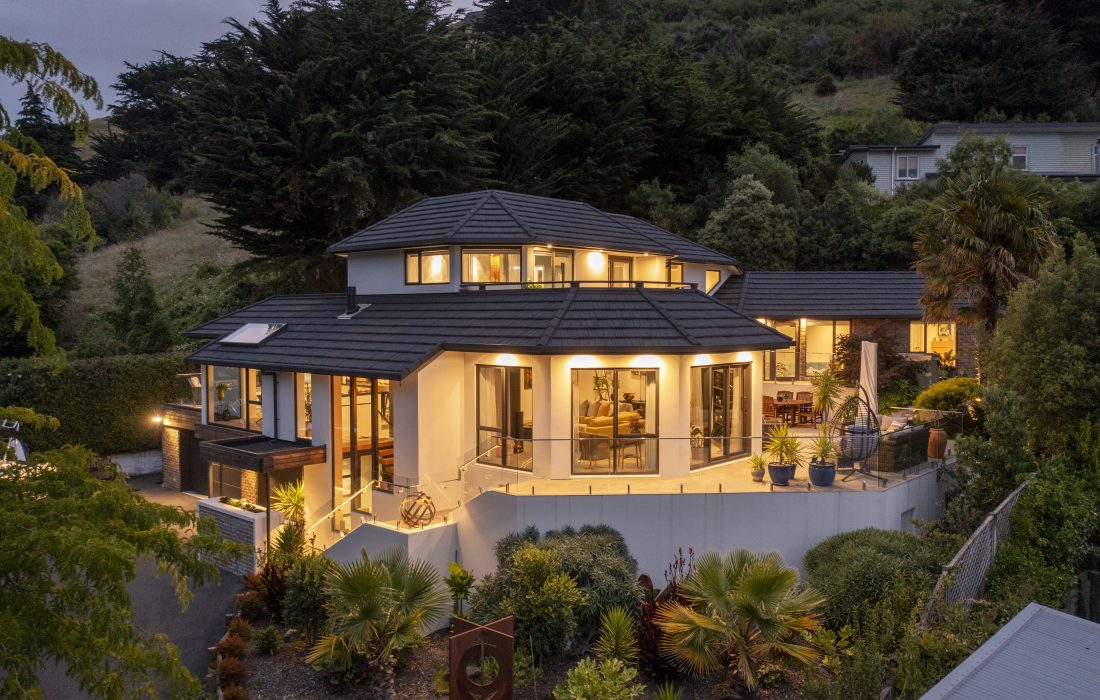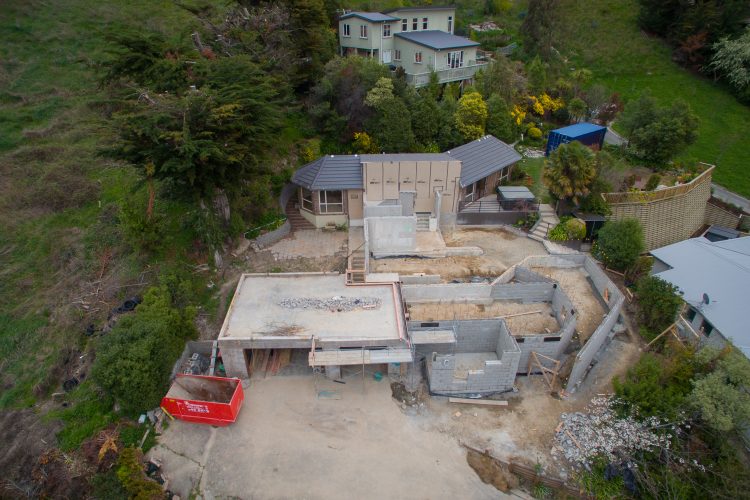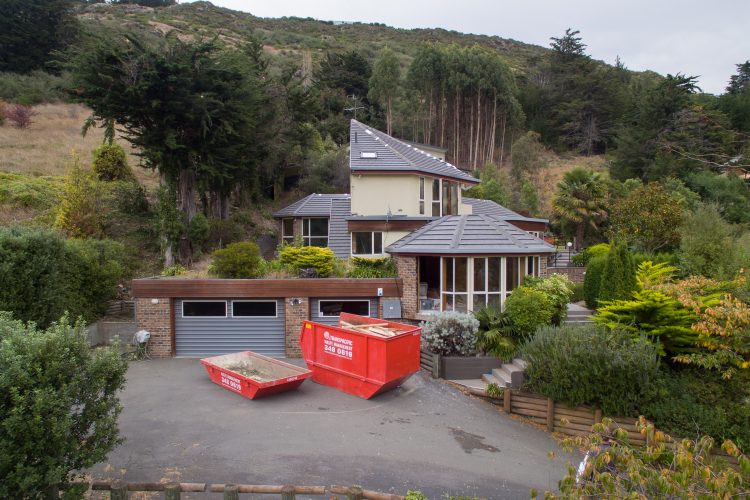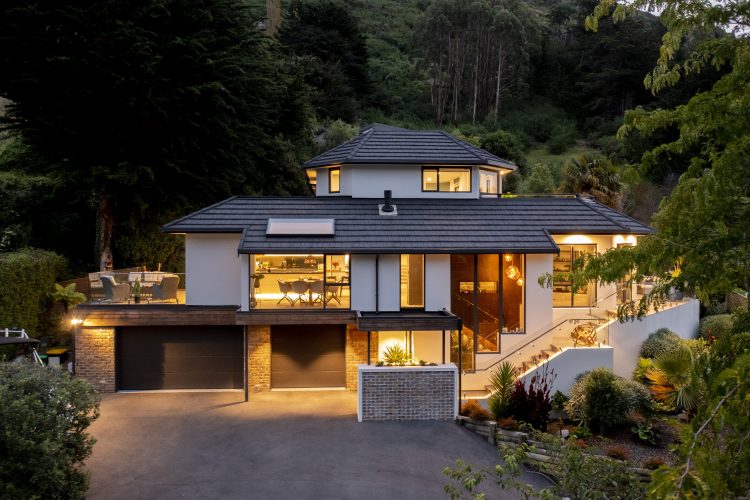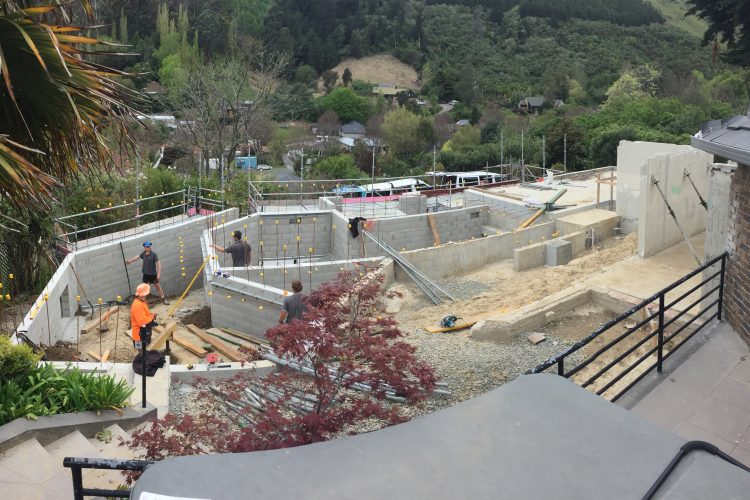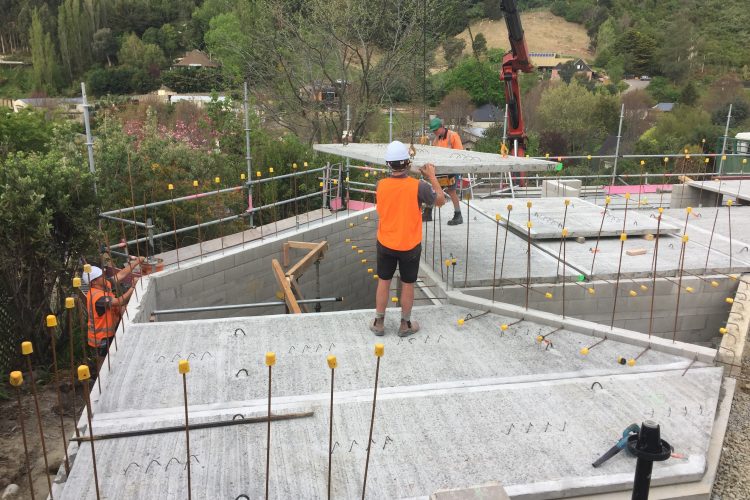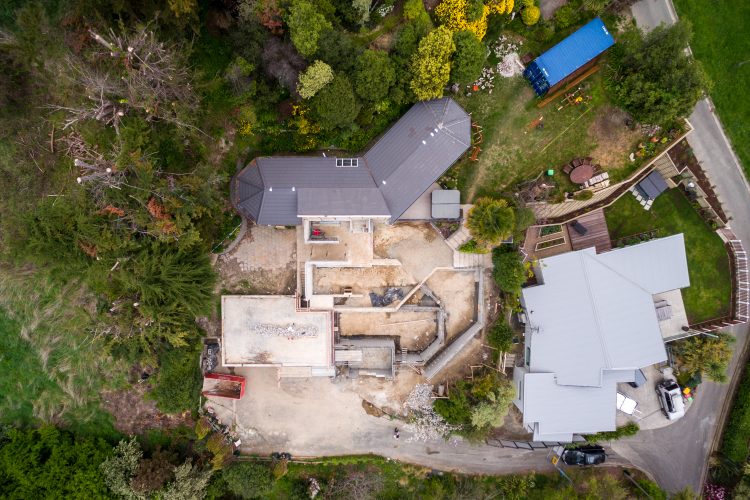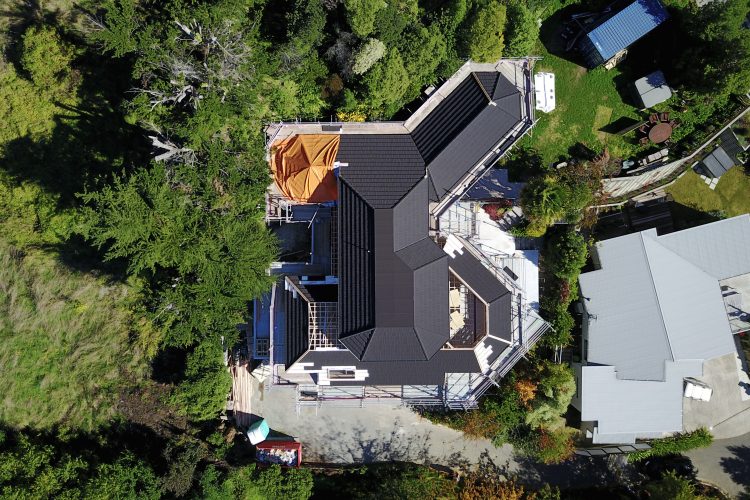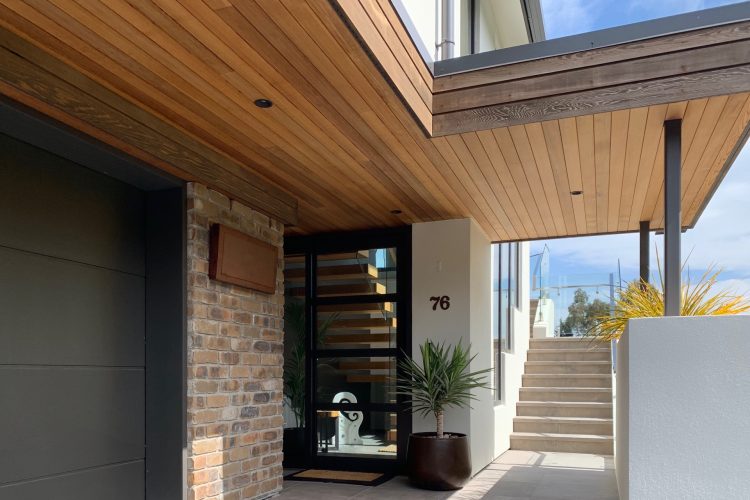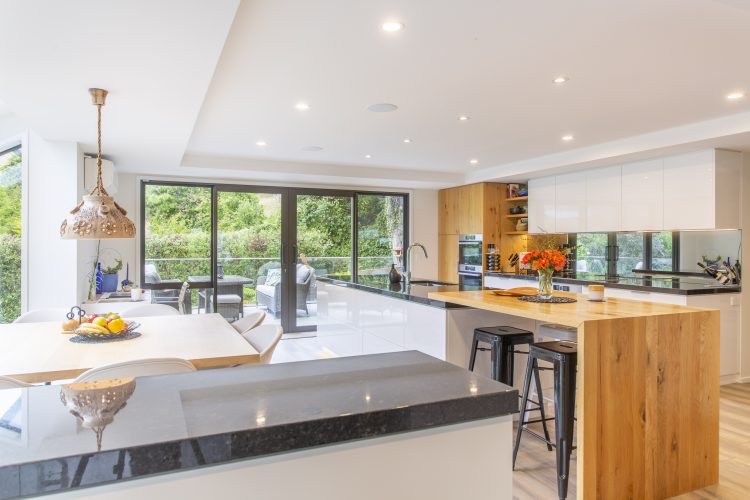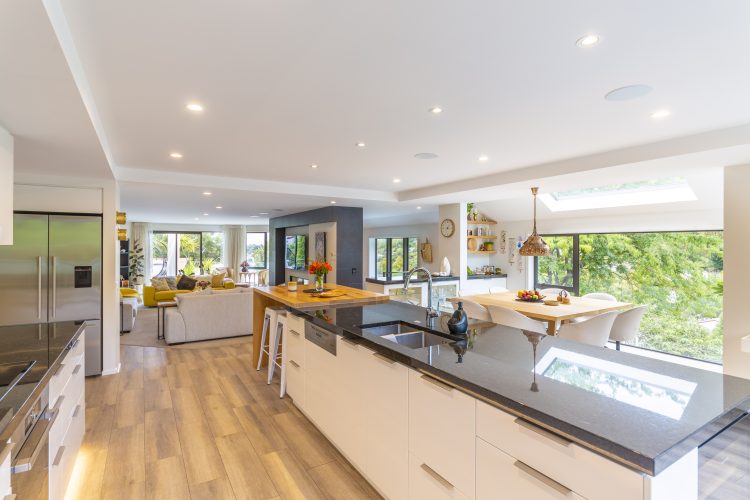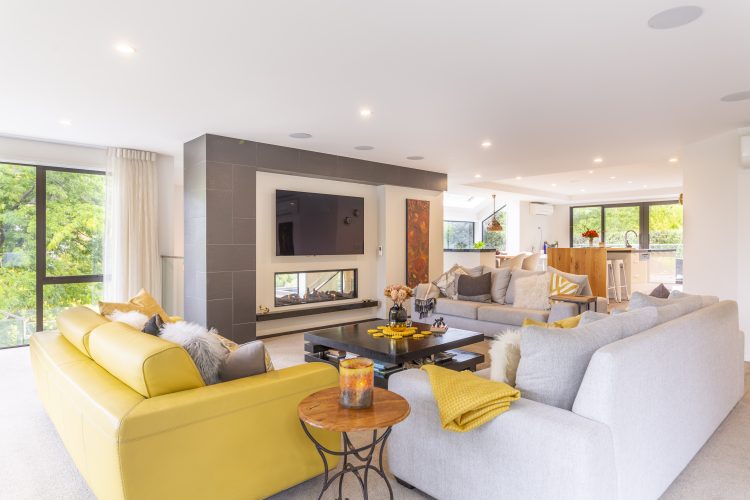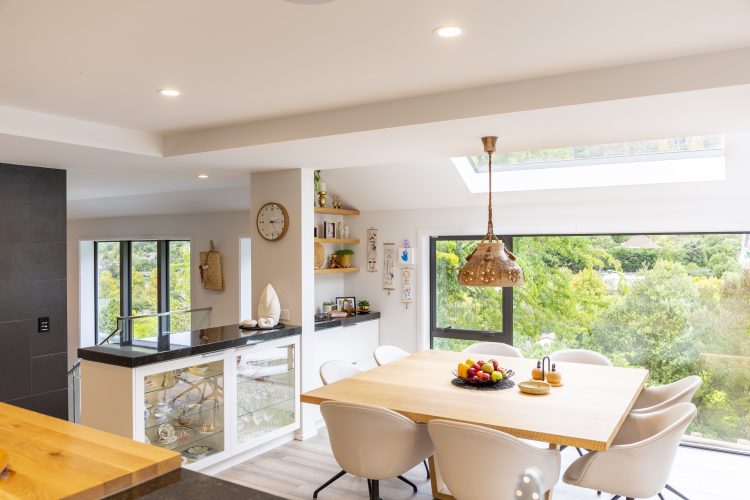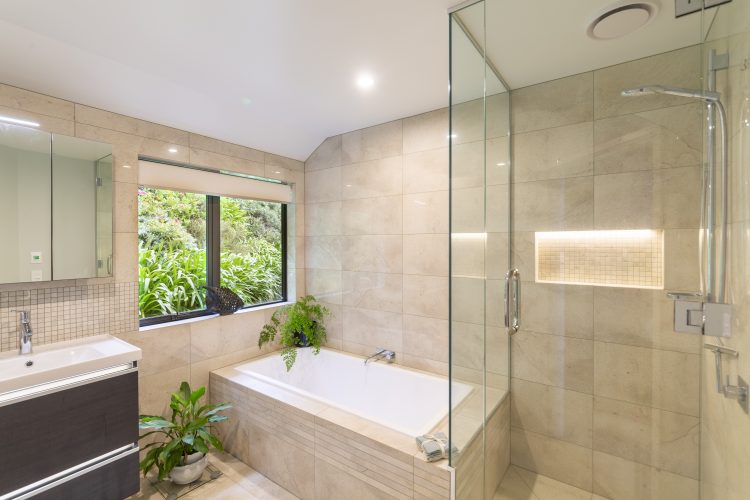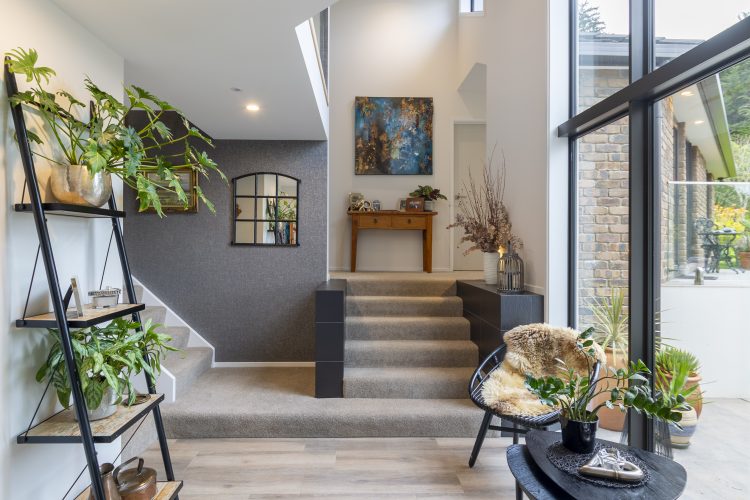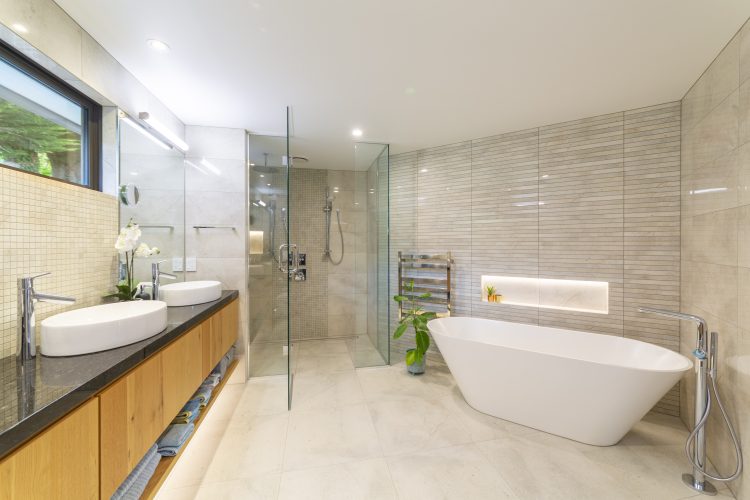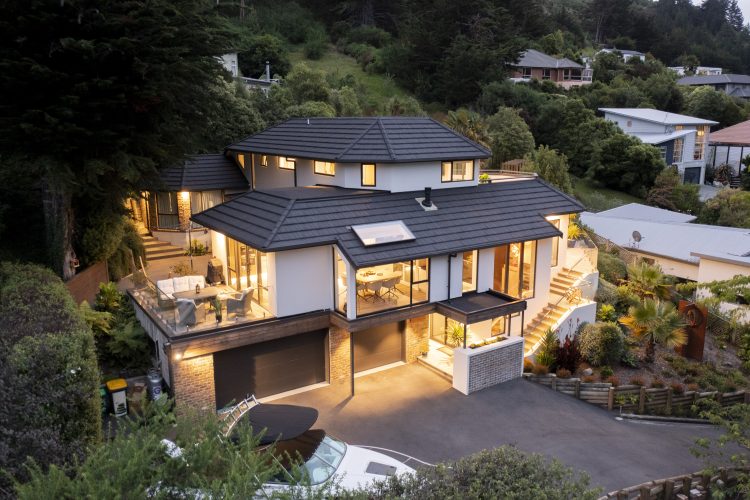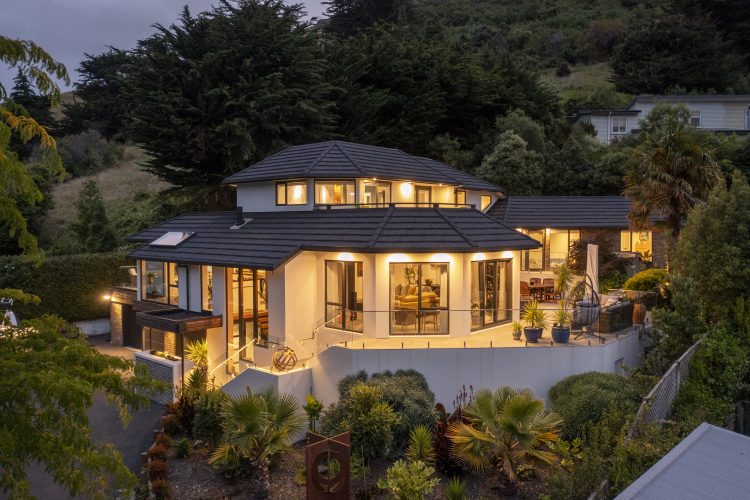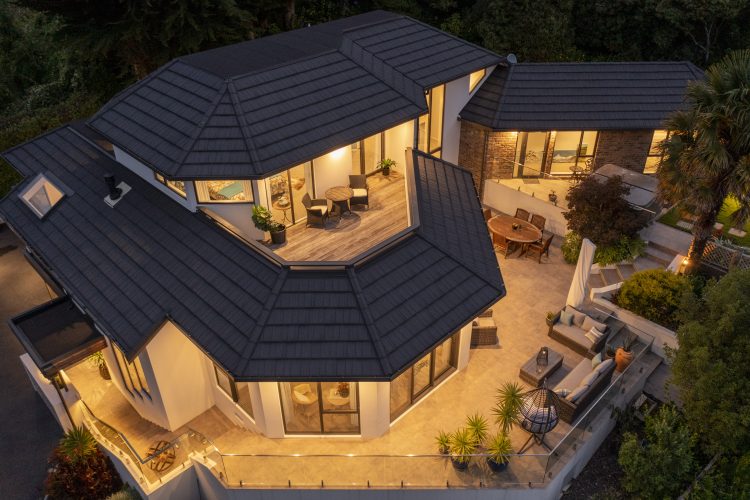NESTLED IN THE VALLEY
What started as a small-scale renovation, updating the front door and entry, turned into a whole of house renovation and 100 square metre extension to an existing 269 square metre hillside home.
Building new on a steep hill site would present plenty of challenges. These were amplified for a renovation of an existing house spread over five levels, on a site with restricted access (a long shared driveway requiring careful scheduling of sub-contractors and site visitors), poor ground conditions (that necessitated temporary support structures to enable the build) and foundations that were also retaining walls and therefore required waterproofing.
Richard Fantham of Radius Building says a primary concern was identifying the potential issues far enough in advance to enable solutions to be found to avoid additional cost and expenses.
“This renovation project took more thought than any other job”, says Richard. “The complexity of renovating the existing house and successfully connecting it to the 100 square metre extension challenged us to identify all the problems before we started demolition and reconstruction.”
Part of the complexity is created by not knowing what lies beneath the walls, ceilings and foundations of older houses built to different building codes. The existing building may no longer be compliant and that means materials may need to be replaced or modified to bring it up to code. Sometimes the only way to find out what needs to be remedied is to rip off the cladding and take a look. The complexity of this renovation is best illustrated with the many intricate joins between levels (floors, ceilings and rooflines) and rooms (walls, doors and windows).

